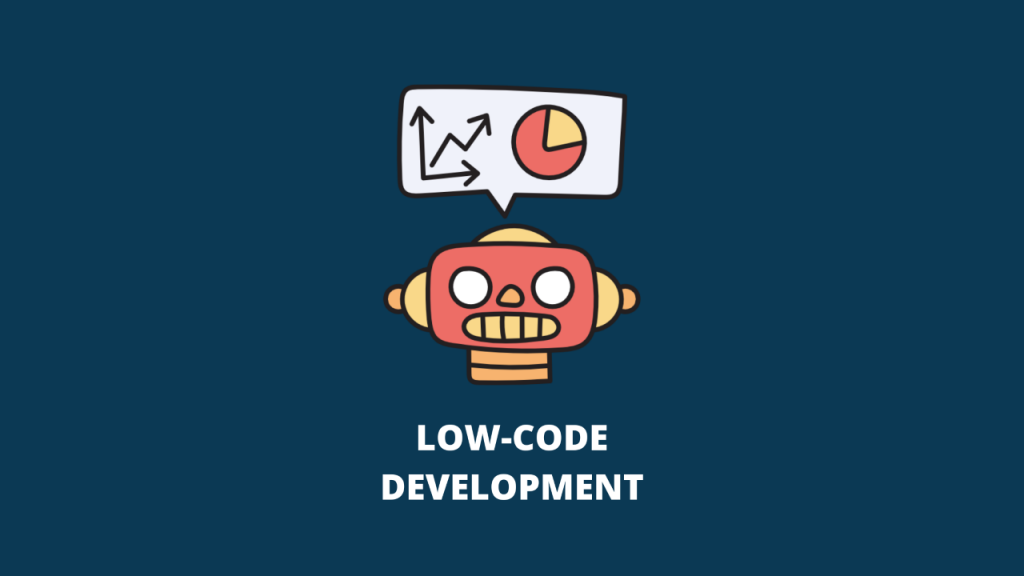
IT and technology are complex entities within any organization. Nonetheless, it is essential that both are integrated to achieve business goals. This emphasizes why low-code has become a key consideration when it comes to integrating new technology.
However, a low-code solution is an excellent option for seamless integration. It accelerates development work and makes applications ready in a limited time. Moreover, if the platform is right, low-code integration becomes a manageable task, allowing various enterprise systems to coordinate and improve the overall ecosystem.
This article aims to provide insights into low-code integration and to debunk myths related to it. Reading further will help you decide on the right solution for your organization.
Quick Brief on Low Code
Low-code development is made easy with virtual interfaces. Writing code is traditionally a tedious and time-consuming task that requires skilled and experienced developers. Choosing a low-code solution as an alternative simplifies this process for both experts and citizen developers. The drag-and-drop functionality rapidly builds applications.
Did you know that low-code can accelerate development speed by 40–90%? This enables teams to deliver projects faster and without extending deadlines.
Busting Myths
To make an informed decision, it is important to understand the misconceptions related to low-code development. Here are three common perceptions:
It’s Too Complex
The ecosystem around technology is undoubtedly complex. There are CRM systems in sales, billing systems, and case management systems that help in managing resources. For critical processes and automation of repetitive tasks, businesses create systems to ease workflows. Additionally, complex data management processes also exist. Considering this, enterprises may feel apprehensive about adopting another solution.
However, integrating low-code into an existing ecosystem simplifies connections between these systems. Low-code enhances sharing efficiency and eliminates data silos. API integration becomes seamless, allowing businesses to have a unified data model. Furthermore, all of this is easy to set up and maintain.
While some consider low-code an additional tool, it effectively becomes a layer that facilitates communication among multiple systems.
It’s Powerless
The flexibility of low-code often makes it appear unsuitable for end-to-end encryption. However, selecting a vendor with a robustly built low-code platform enables you to enjoy all related benefits. Platforms like DEWStudio are among the powerful, enterprise-grade solutions.
Low-Code Scalability
This is one of the biggest myths about low-code solutions—that they are not scalable for enterprises with growing resources. However, DEWStudio and similar platforms are designed with expanding enterprises in mind. As infrastructure requirements grow, low-code platform functionalities allow dynamic scaling to meet these adjustments.
Is Low Code Solution Right for You
The apt answer to this concern is yes. It is an essential for every enterprise. The following are a few reasons:
Makes the process easy for the company
For any business an efficient process is key to make better output from their services or products. The low code option helps in having a workflow that can outperform the traditional spreadsheet method. For any small to large scale businesses a management system can be designed to follow and allow different departments to work accordingly. This will improve business workflow. And it is all achievable with low code development platforms.
Can integrate with existing department
For any business, transitions take time, but changes can be accelerated. A low-code development platform is a powerful tool that plays a crucial role in this process. It enables faster development of software solutions, though the platform itself must be highly advanced and robust to deliver impactful results.
Offers Agility for Development
A low-code platform offers developers an agile approach to achieving their goals, providing the flexibility to accelerate workflows and adapt solutions easily. Developers can adjust processes based on evolving needs and market opportunities, which is crucial in a constantly changing landscape. As frameworks, market demands, and organizational needs shift, low-code platforms have become the ideal choice for competitive enterprises seeking adaptable and efficient development solutions.
Way to make the most of Low Code Integration
It is important to keep in mind that all low code platforms are not identical. They all are built using distinct technology, has functionality and features. Therefore, for comprehensive utilization of such low code platforms it is necessary to understand their capabilities first. For an example strong connectors of low code and right software systems makes integration of the new application developed using low code into the existing infrastructure easy and seamless. A data fabric architecture helps by connecting different data sources, giving you a complete, 360-degree view of all your data. It’s also essential to use low-code tools as part of a bigger plan for automating processes from start to finish. Many automation platforms come with built-in tools, like AI and Robotic Process Automation (RPA), which help speed up tasks without requiring you to build everything from scratch. This combination saves time and boosts efficiency across your workflows.



